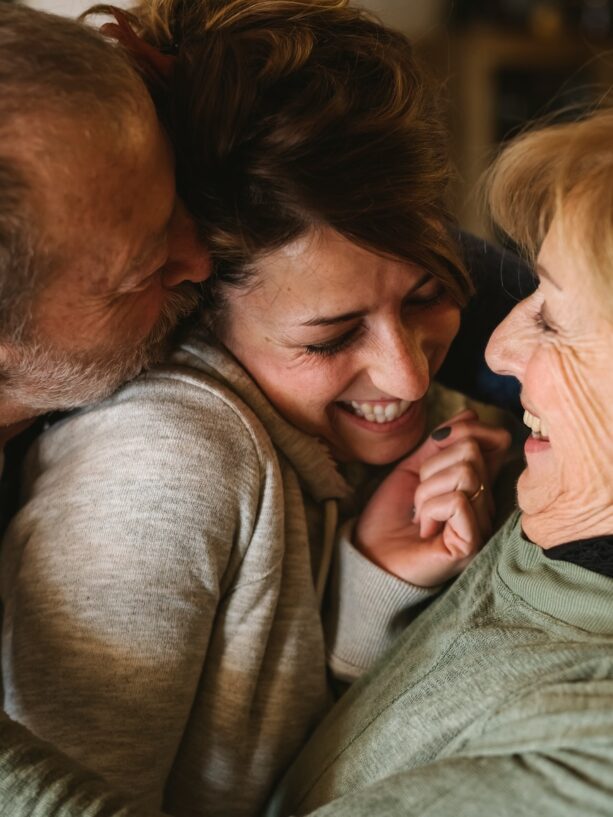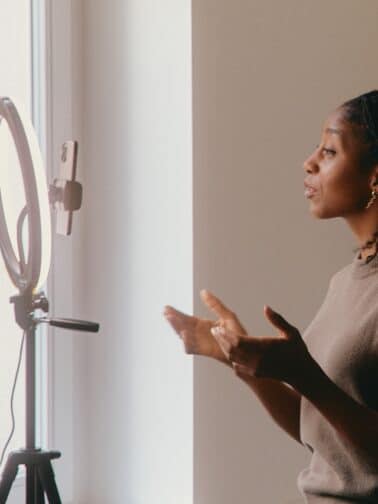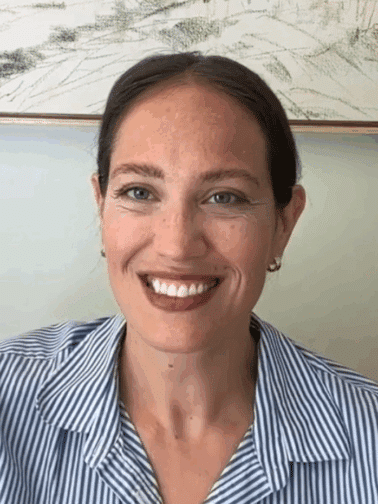Do you ever feel like you sabotage your relationships?
Do you struggle with feeling close and connected in your intimate relationships?
Or do you avoid seeking out relationships because you just don’t think they’re safe or reliable?
Do you pride yourself on being independent and not needing anyone?
Do you long to have more functional, stable, warm and connected relationships in your life?
Today’s post is just for you.
So, in my last blog post two weeks ago I introduced the ideas of attachment theory and attachment styles and provided snapshots for you of the four primary styles: secure, anxious-ambivalent, anxious-avoidant, and disorganized.
In today’s post, I answer the question that is probably top of mind for anyone with other than a secure attachment type: so how do I become more securely attached?
To learn how, keep reading.
What contributes to our various attachment styles?
To answer this question, it’s important to recall from the last blog post that our attachment styles largely form in relationship to our early caregivers – our parents or other guardians – who were the primary individuals we turned to for caretaking and attunement.
It’s worth noting, too, that our attachment style can be also influenced later in life. Through circumstances or personality changes. Like being in a toxic or abusive romantic relationship. Or how teenagers largely push away from their attachment figures during adolescence.
However, for most of us, the dominant force in shaping our attachment style as adults will be our early childhood experiences.
What this means is that if you had good enough parents who largely made efforts to try and attune, respond, and appropriately react to you and who also tried to mend the relational ruptures between you two when they happened, you may form what’s known as secure attachment: a relative ease, capacity for, and positive view of relational intimacy.
If you did not have this kind of parenting, if your parents were preoccupied with circumstances (such as poverty, environmental traumas, job changes, ill health) or their own internal limitations (mental illness, addiction, personality disorders), you as a child may have “coped” and “managed” this probably lack of consistent, good enough attunement by developing beliefs and behaviors that fit into one of the other attachment styles: anxious-ambivalent, anxious-avoidant, or disorganized.
A sense of shame and defeat when we realize that we aren’t securely attached.
But please hear me: your attachment style is not your “fault”!
You come by it very honestly. And it’s more than likely that your attachment style kept you safe. Through times when it may not have been very safe to closely attach.
It was actually very clever of you as a child to view and manage relationships the way you did.
It’s just that now, as an adult, that same attachment style may no longer be working quite so well for you and you may be sitting with the questions:
So is this it? Or can I become more securely attached? And how does that happen?
Why Doesn’t Your Success Feel as Good as It Looks?
A quiz to help you understand why you might feel less stable beneath the surface despite working so hard to build a good life.
START THE QUIZ
Becoming more securely attached.
I personally and professionally believe that attachment styles are not fixed.
They are not rigid, they are not set in stone, they are malleable.
Just because you have anything less than a secure attachment style now does not mean that secure attachment can’t and won’t be possible for you.
But how do we become more securely attached?
I believe that secure attachment can be learned and earned through self-reflection as well as consistent, more functional and reparative relational experiences.
What do I mean by this exactly?
Well, for example, let’s imagine that, growing up, you had a caregiver who shamed you, blamed you, or who never or inconsistently took responsibility for their actions or impact on you.
Because of this, you may have developed an anxious-avoidant attachment style where you learned it wasn’t emotionally safe to be close to others.
After all (you may think), what’s the point of being close to someone who can’t and won’t be consistently relational and empathetic with you?
You grow up into an adult and have a hard time allowing others into your life and for those you do let in, when they slight you or rupture with you, you may emotionally cut them off and withdraw from the relationship as an anxious-avoidant response to now no longer trusting their capacity to be someone safe you can connect with.
You have developed an anxious-avoidant attachment style and response system.
But let’s also imagine that, somewhere in your adulthood, you start to become curious and even uncomfortable about how you relate to others.
You notice that the relationships in your life don’t last very long and that they are pretty fragile and “brittle” and that you’re always “waiting for the other shoe to drop.”
You start to wonder if something else could be different.
So maybe you begin therapy.
You begin working with a therapist and generally like her.
But one day, maybe two months into your sessions with her, she’s about 7 minutes late to the waiting room to get you and, though she apologizes when she arrives, you feel angry and hurt and start to imagine ending therapy.
You catch yourself having an avoidant relationship response. Wanting to quit and run and distance yourself from your therapist because of this lateness/rupture in the relationship. BUT, instead of following through on this impulse, you do something different. You tell her how you’re feeling.
You take a chance and let her know that you feel hurt and angry that she was late. And that this makes you feel like you want to quit therapy.
Now, this is a relational risk for you because if you had told your mother when you were younger (or even now) that something she did hurt you, she might say something like “I’m sorry I can never be perfect for you! Your standards are impossible and you make such a big deal out of everything!”
Because of a lifetime of your mother’s unsupportive responses, it feels risky to bring up your hurt feeling to your therapist but she responds by saying:
“I am so glad you told me this! It’s important for me to know how I impacted you. I completely understand how you must be feeling. You expect me to be on time and I wasn’t and that hurt your feelings. That wasn’t my intent and I’m really sorry that was the impact on you. I made a mistake and let a phone call go too long and was late getting you. I will try not to let that happen again. If I do something that hurts you in the future, I want you to let me know so we can try and work through it together. Are you open to this?”
You have just had a reparative relational experience.
A different kind of relationship experience than you likely had with your caregiver and it’s a response that is appropriate and an attempt at mending the rupture after it happened.
Over time, as you accumulate more and more reparative relational experiences – experiences that provide you with something different and more functional than what you experienced growing up – you can begin to LEARN what secure attachment can look like and you can EARN secure attachment by becoming less anxious/avoidant/or disorganized-reactive and more functional, consistent, and stable in your own relationship responses.
This kind of cumulative reparative relationship experience COMBINED with self-reflection about how you typically respond in relationship can be a powerful force for helping to change your attachment style and shift it to one that’s more securely attached.
But how do we go about having reparative relational experiences?
Seeking out reparative relationships.
Often for those of us who grew up in homes where secure attachment was not modeled or provided, it can seem like a fantasy that secure attachment exists or that we can expect to have it in our own lives.
(If you caught yourself disbelieving the above example with the therapist thinking, “Yeah right, no one responds like that!” that’s case in point.)
It can feel hard to imagine that there is any chance of having enough reparative relationship experiences. Especially when we don’t even know exactly what this looks like. Or who we can get it from. Or if those kinds of secure attachment figures will even show up in our lives.
But I would ask you to have some faith.
It IS possible to have securely attached relationships in your life and to become more securely attached yourself. And it may take time to develop this.
You can seek out reparative relationship experiences from a wide variety of people.
To name a few:
- Family members (with different, more secure responses than your primary guardians and caretakers)
- Friends and colleagues and peers
- Coaches, mentors, teachers, authority figures
- Romantic partners
- A therapist or other trusted professional you turn to for support
I would strongly recommend, though, if you don’t think you have any secure relationships in your personal life, or if you have a hard time even recognizing what this may look like, start with getting yourself into therapy where you can work with someone who’s literal JOB is to be a securely attached, consistent figure for you.
Let them model for you and help you explore what functional, more secure relationship could look like. And then take your learnings outside the therapy room. Then, either find or see the people in your life who can likewise be considered secure. And then cultivate reparative relational experiences with them.
Wrapping this up.
When it comes to transforming your attachment style into one that’s more secure, it IS possible. What’s also true is that it took you X-number of years to develop the attachment style and ways of coping that you currently have, so it may take some time to learn and practice something different so that it becomes more normative for you.
But self-reflection combines with seeking out and accumulating reparative relational experiences can help you learn what secure attachment looks like and earn a more securely attached relationship style in yourself.
Remember, no matter where you’re starting from, transformation is possible. Your history is not your destiny and if you’re willing to do the brave, sometimes uncomfortable work of facing yourself and your own personal history, you can rewrite your future.
Now I’d love to hear from you in the comments below:
Have you transformed your attachment style?
What was a big factor in helping you learn how to become more securely attached?
What would you say to someone who doesn’t believe that this is possible?
Leave a message in the comments below so our community of readers can benefit from your wisdom.
Here’s to healing relational trauma and creating thriving lives on solid foundations.
Warmly,
Annie





